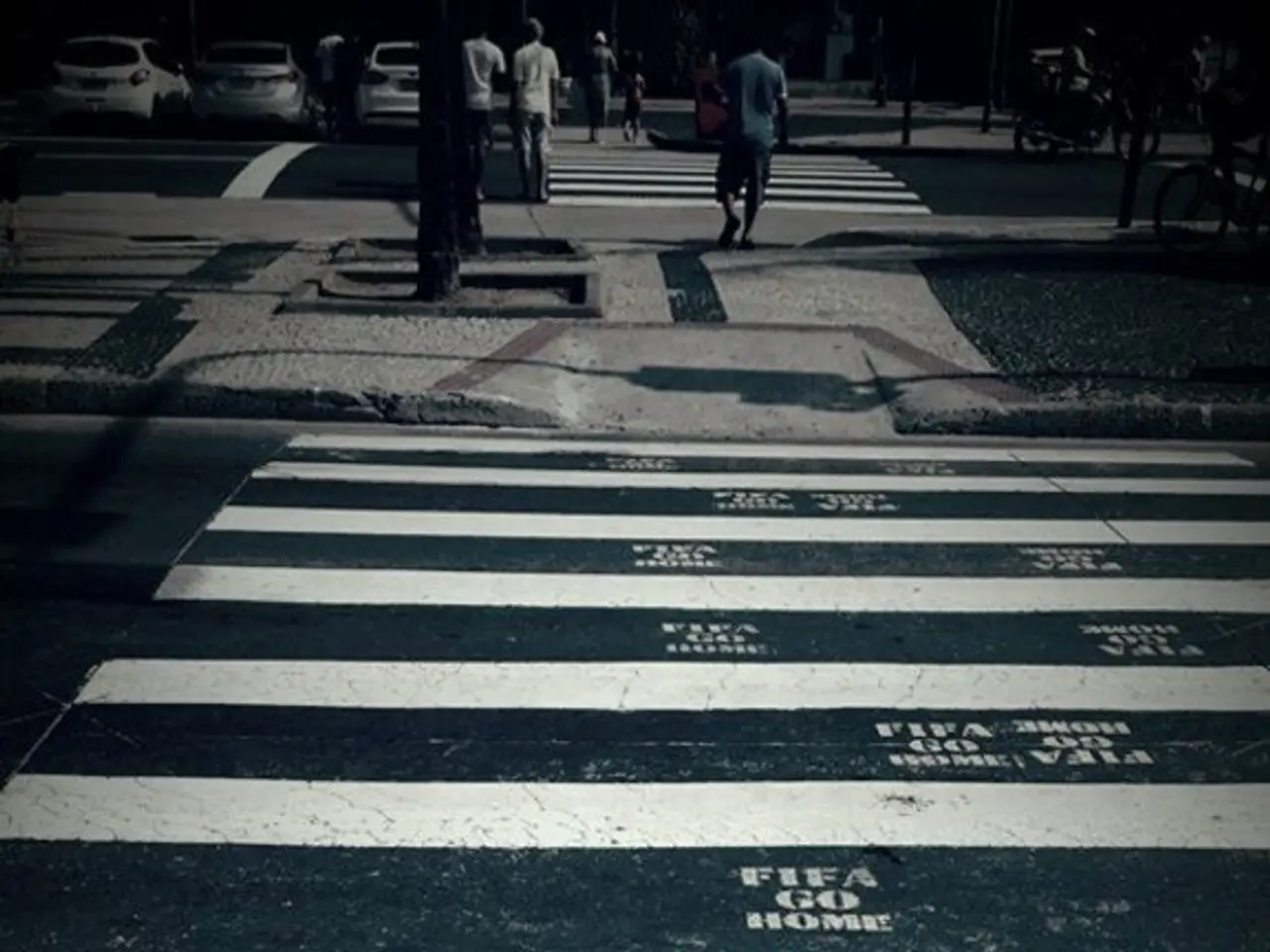Zebra stripes are disappearing at an alarming rate across the city, with the urban landscape mimicking a "self-painter" strip by strip.
In the heart of Saxony, Dresden city officials are facing criticism for the slow implementation of pedestrian crossings. Parents, particularly those with young children, have expressed dissatisfaction with the current situation, citing safety concerns as their primary worry.
Recent events have brought the issue to the forefront. Unknown individuals painted a pedestrian crossing on Bischofsweg in the Neustadt, an unauthorized traffic sign that has resulted in a criminal complaint by the Streets and Roads Department for property damage and endangering traffic. The city hall has announced that this action is illegal and will be fined for such an offense.
The city councilor, Stefan Engel (SPD), has expressed concern about the slow progress and is pushing for action. Engel believes that the city administration should find practical solutions to implement pedestrian crossings at sensible locations. He emphasizes the importance of ensuring the safety of the city's children, many of whom will walk to school, posing a potential danger in the absence of adequate pedestrian crossings.
Three years ago, a commission identified 259 spots in Dresden where pedestrian crossings or traffic lights were needed. Out of these, 60 have the highest priority for implementation, but so far, only two new pedestrian crossings have been added: Aachener at Kopernikusstraße and Loßnitz/Marta-Fraenkel-Straße.
In contrast, Leipzig, a city with similar population size, has implemented more pedestrian crossings. This discrepancy can be attributed to Dresden's current civil engineering workload and priorities. The city is heavily focused on large-scale projects such as bridge and railway construction, which involve complex engineering challenges and time constraints. These projects appear to take precedence, potentially delaying pedestrian-related improvements.
Leipzig-based companies, however, are highlighted for their specialized experience in urban transportation concepts, suggesting a more agile or focused approach to pedestrian and transport infrastructure there. This could explain why Leipzig might advance quicker in implementing pedestrian crossings.
The city hall plans to implement three more pedestrian crossings: Bernhardstraße/Plaunscher Ring, Erich-Kästner/Heinrich-Mann-Straße, and Dammweg/Loßnitzstraße. The estimated cost of a pedestrian crossing with "sidewalk extension" and tactile paving is 95,000 euros. The implementation of these crossings is dependent on priorities, available personnel, and financial resources.
As 37,000 first-graders in Saxony prepare to attend school for the first time on Monday, the need for swift action in improving pedestrian safety in Dresden becomes increasingly urgent. City officials are urged to prioritize pedestrian crossings and find practical solutions to ensure the safety of the city's children.
[1] Source: Various online news articles and city reports.
- The ongoing debate about pedestrian safety in Dresden, particularly the slow implementation of crossings, has gained traction, with the recently unauthorized painting of a crossing on Bischofsweg highlighting this concern.
- Stefan Engel, city councilor from the SPD, has voiced concern over the pace of progress and is advocating for immediate action to secure pedestrian crossings in appropriate locations, considering the safety of children in Dresden.








